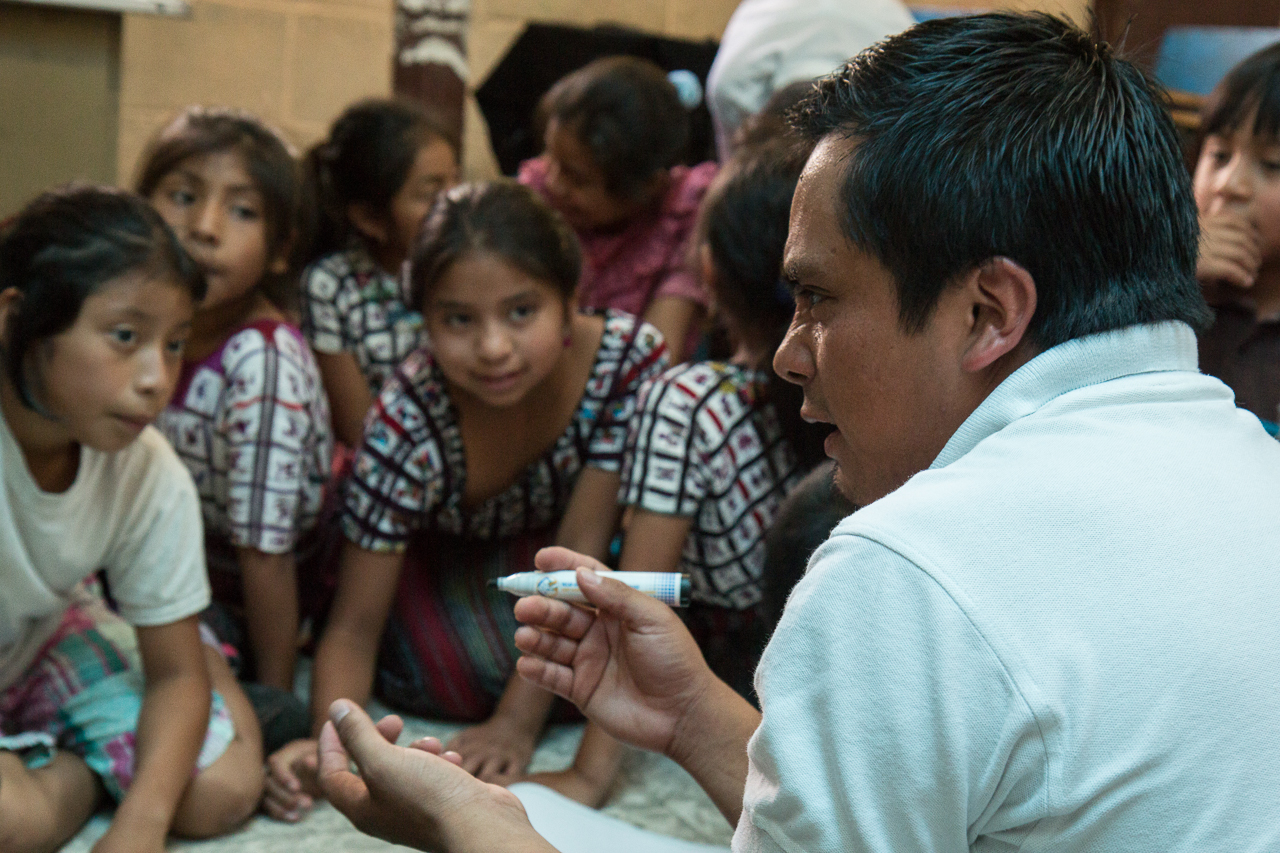
When Literacy Trainer Jeremias Morales walks into a classroom, kids pay attention.
Whether he’s reading a story, running an activity or working with a small group of students, Jeremias brings an incredible amount of energy and enthusiasm to his work. He is adept at engaging kids, getting them involved in learning and making the experience of reading fun and interesting.
“This work is challenging and there can be problems,” he says. “but I’ve learned if you have enthusiasm it makes everything easier to handle.”
As one of Child Aid’s seven Literacy Trainers, Jeremias’ work is at the heart of Child Aid’s Reading for Life program and part of what distinguishes it from other teacher training programs.
Much of his time during the school year is spent on follow-up visits with teachers, one-on-one sessions where the trainers help teachers apply the techniques and activities they learned in Reading for Life workshops in their classrooms.
“In the workshops, the teachers are introduced to the concepts and techniques, but after a few days or weeks it might fade,” says Jeremias. “In the followups we talk about their experiences and can discover what’s working and what’s not. We talk about what they are observing, what problems they are having and what they can do differently.”

On a typical day, Jeremias gets up early at his home in San Lucas Toliman near Lake Atitlan and hits the road to visit one of the five schools he manages in the region. After each workshop, Jeremias will do two follow-up visits with every teacher. In the first session, he works directly with the students, modeling the activity and techniques for the teacher. In the second visit, he observes the teacher using the techniques themselves, offering suggestions and advice to help them improve.
It is time-consuming work. Meeting with 45 teachers over two workshops, Jeremias did nearly 200 teacher follow-up sessions this school year.
“I usually spend an hour or more with each teacher,” he says, “Since school gets out at 12:30, I can do at most three followups in a day – two before the recess and one after.”
But, he adds, the personal support and regular contact is important in helping teachers continue to progress and it’s rewarding to see the changes in teacher’s skills and student’s learning over time.
“I like it when I can see that they understand a concept and I know I’ve helped them get better,” he says.
Jeremias grew up in the town of Las Canoas, near Lake Atitlan, and speaks Kaqchikel, K’iche and Tzutujil in addition to Spanish. Although he was a good student, he says reading was taught by repetition and decoding and was very boring. His parents encouraged him to read, but he had little access to books, especially storybooks and novels. It wasn’t until after he reached university and developed a love of learning that he discovered the value of books in his life.
“I remember when I was a kid, I never had the opportunity to talk about a book. Reading was just for homework,” he says. “Now when I hear about a book on a topic I’m interested in, I want to read it because I want to get the new knowledge.”
In his work with Child Aid, Jeremias says he hopes he can pass on his enthusiasm for reading and help students understand that learning can be fun and important to their lives.
“I want the kids to get as excited about a new book as they are about playing football at recess. I try to show how school can be fun and not so boring. Because when reading is fun, they learn.”
VIDEO: Watch Jeremias at work during a teacher follow up session.